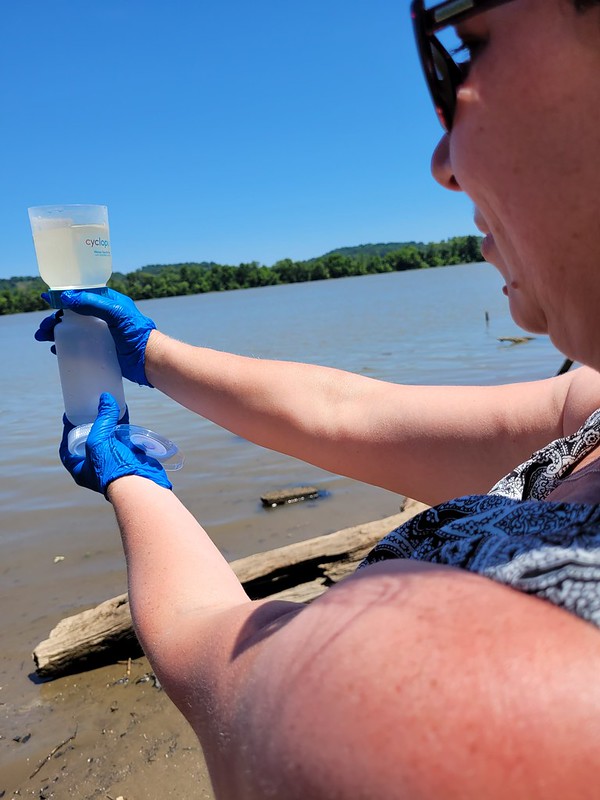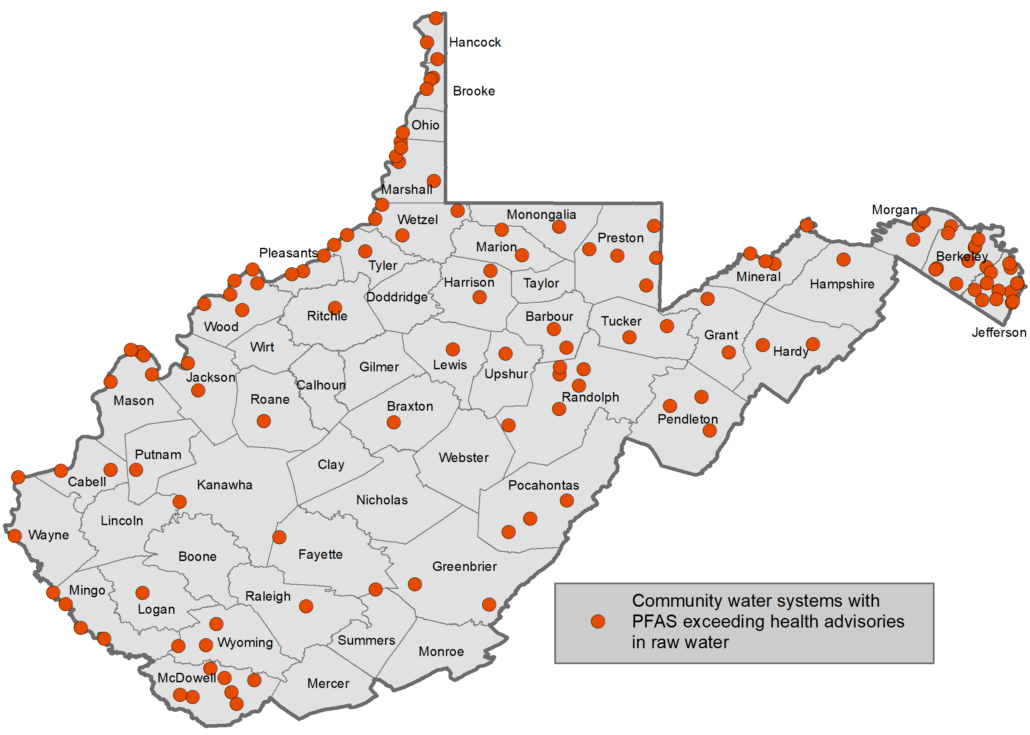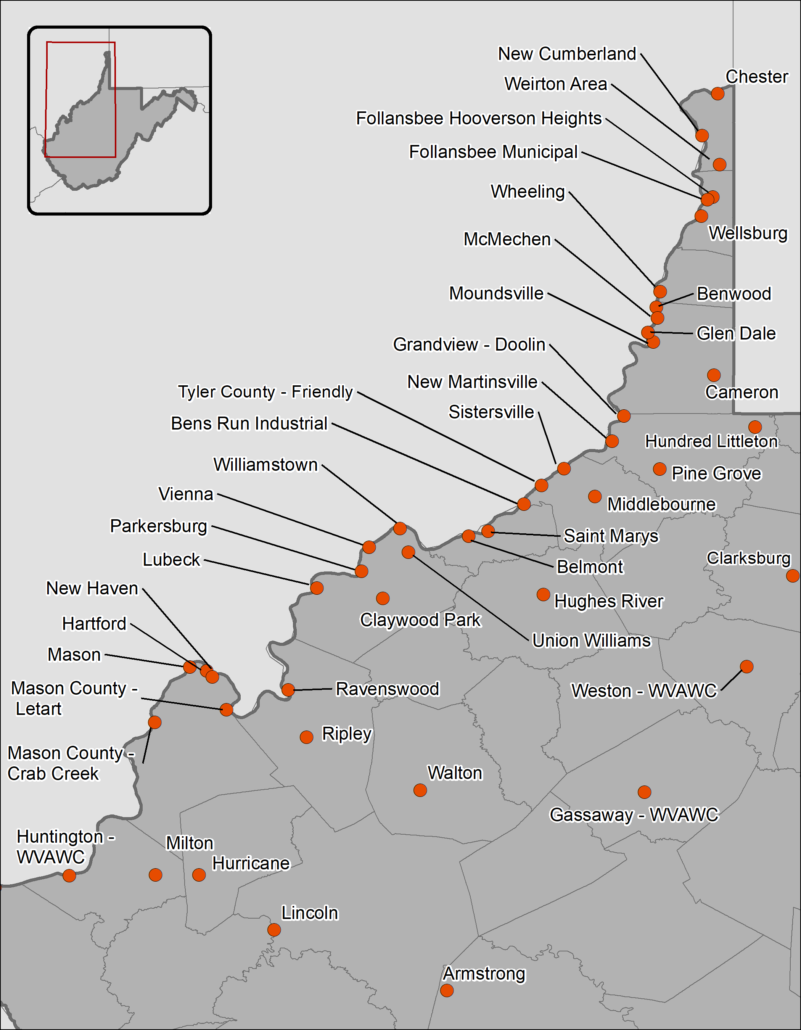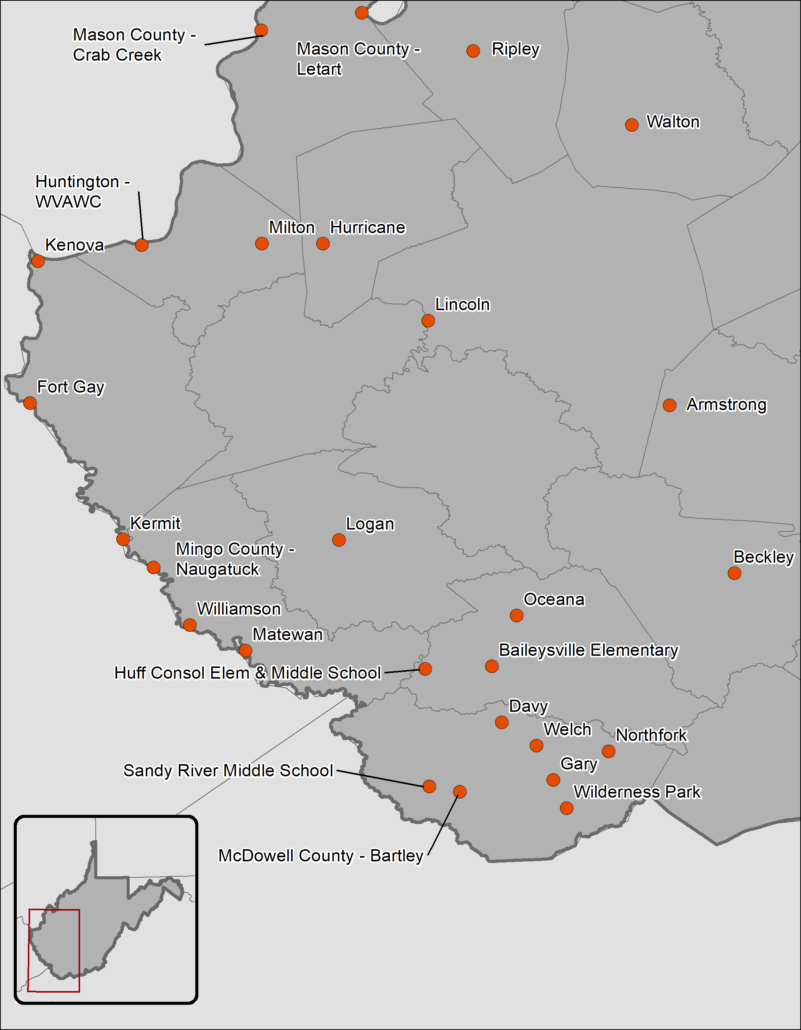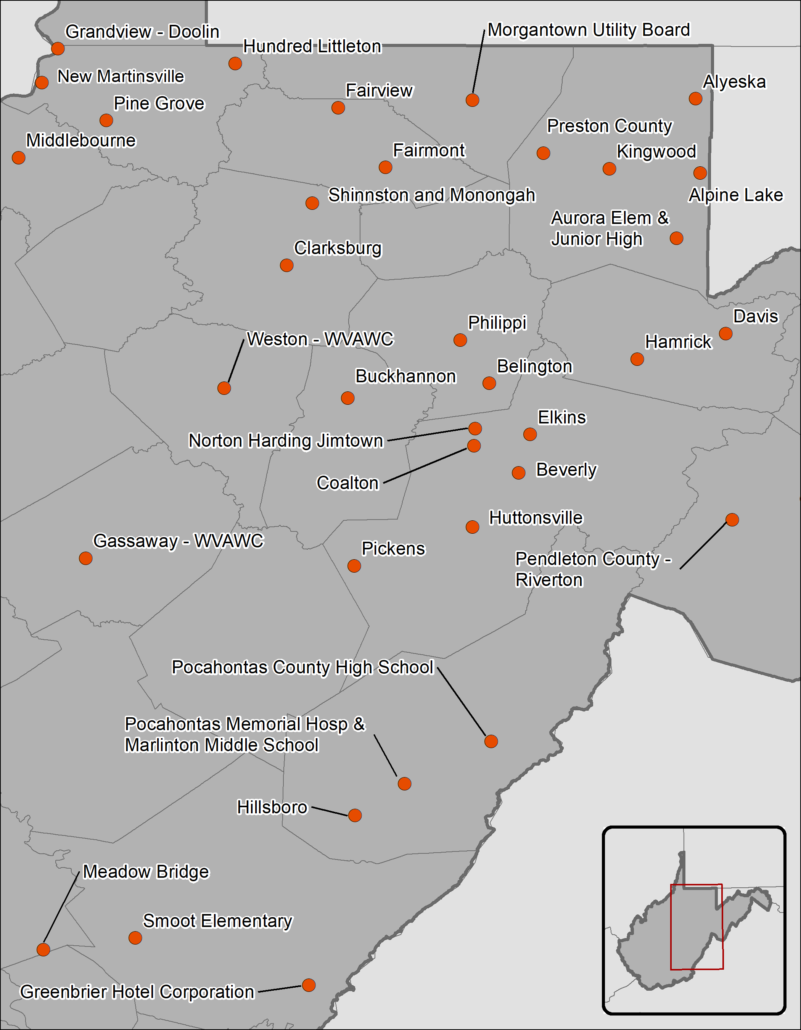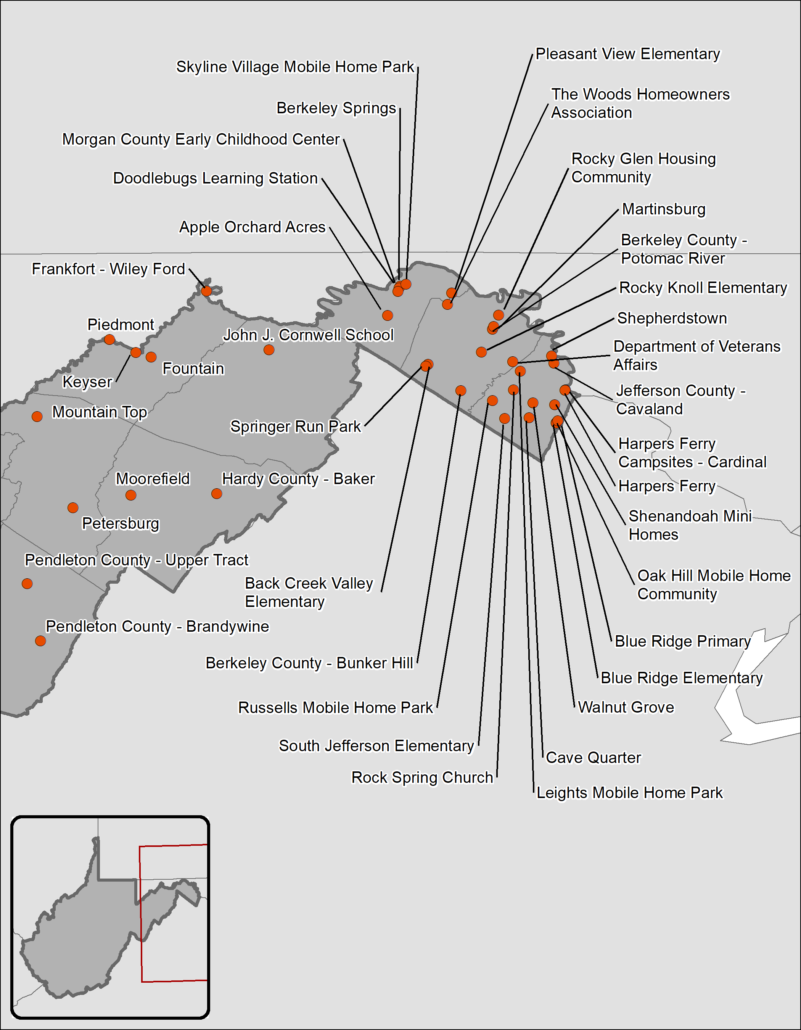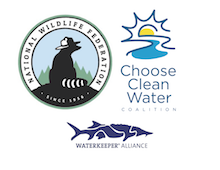PFAS: The Forever Chemicals
Per- and polyfluoroalkyl substances (PFAS) are a group of man-made chemicals that do not exist naturally in the environment. There are around 10,000-12,000 PFAS, about 600 are used in the United States. They are considered “forever chemicals” because they do not break down under natural environmental conditions.
PFAS have been used in consumer product manufacturing since the 1950’s. They are used for their non-stick and water-resistant properties. You can find them in fast food containers/wrappers, microwave popcorn bags, carpet and nonstick cookware.
Program Director, Autumn Crowe, collects a water sample from the Ohio River to test for PFAS.
PFAS and Human Health
PFAS have been found in 99% of people living in the United States. The main way we are exposed to them is through our drinking water and the food we eat.
In June of 2022, EPA released drinking water health advisories for four PFAS. These advisories indicate the levels above which these PFAS are dangerous to public health. PFAS are known carcinogens and exposure affects the immune and cardiovascular systems; and human development.
In West Virginia, we know people have been exposed to PFAS through contaminated drinking water in the Eastern Panhandle and the Ohio River Valley.
New Research to Identify PFAS in West Virginia
In July 2022, the state released a study of PFAS in West Virginia’s pre-treated source water. The state tested water supplies for up to 28 types of PFAS. At least 1 type of PFAS was detected at levels exceeding health advisories at 130 community water systems. Whether customers of those utilities have PFAS in their finished (treated) tap water is unknown. The state is currently studying the presence of PFAS in finished water and we anticipate data to be released in Spring of 2023.
Resources
PFAS Info Packet Data – Supplemental information on the community water systems with PFAS detections, information on number of people served by the system, and data on PFAS detection levels.
These maps depicts community water systems where PFAS were detected in raw water supplies exceeding current health advisories. Highest concentrations are found in the Eastern Panhandle and the Ohio River Valley. Double click the individual maps below to zoom in on geographic areas.
Be an Advocate
Removal of PFAS from drinking water is necessary to protect our health and well-being. Agencies must take swift action to control and reduce the use and release of these dangerous substances at their source.
Your voice is the key to holding industry and policy-makers accountable to addressing the PFAS problem! Sign-up to receive updates, information, and actions you can take on PFAS in West Virginia.

